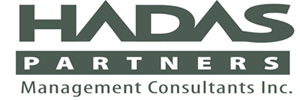When projects are being implemented it becomes very important to track the willingness of people to adopt the resulting changes. If employees are not fully willing, several things can happen:
- The adoption rate will be low. Project Managers tend to experience this as a very frustrating and often drawn out roll out.
- People will go back to their old way of doing things soon after the implementation. That will negate many of the benefits the organization was hoping to get from investing in the project.
- In worst case scenarios, sufficiently powerful or well-connected individuals can derail the whole project. That is experienced as “hell on wheels” by Project Managers.
Much of the focus during a change project is on communication, and rightly so. Communication is important in building awareness and understanding.
There is usually also a big focus on training, and that too is important. Training is important in building employees’ ability to function in the changed environment.
But neither of these ensure that at the end employees will be willing to follow new processes, use new technology, or behave in new and different ways.
Stacking the odds in your favour
Before getting into how to check for willingness, there are basic and simple things any PM can do to improve their chances of having willing employees at the end of the project. It’s important to remember this truth:
Willingness is directly proportional to people feeling they have been heard and acknowledged.
So the more you, as PM, can provide opportunities for people to be truly heard, the more they will be willing to implement whatever you need them to.
 Unfortunately, PMs and Sponsors are often afraid to ask people for their feedback. They fear (justifiably) that they will not be able to accommodate everyone’s request. However, responding affirmatively to every request is not necessary. Employees do not really expect it deep down in their hearts. Most people tend to be reasonable and understand that they cannot get everything they ask for.
Unfortunately, PMs and Sponsors are often afraid to ask people for their feedback. They fear (justifiably) that they will not be able to accommodate everyone’s request. However, responding affirmatively to every request is not necessary. Employees do not really expect it deep down in their hearts. Most people tend to be reasonable and understand that they cannot get everything they ask for.
Again, what people want most is to be heard and acknowledged. People want to feel that you have listened to and have understood them. For example, in situations where an employee offers a suggestion you cannot action, it’s important to: acknowledge them; play back their comment so that it demonstrates you understand what they are asking and why; and, then explain truthfully why you cannot accommodate them now and whether you may be able to in the future.
A caveat
There is an exception to this rule, however. When asking for feedback, make sure you don’t ask leading questions regarding something you cannot fulfill! What’s an example? Consider the following scenarios involving improving a manufacturing process, facilitated by a manager (or sponsor) with staff during a Q&A session.
Scenario 1:
- Manager: “Does anyone have any suggestions how we could improve our manufacturing process?”
- Employee: “Yes, could we have that (insert name of very expensive piece of equipment here)? It would really reduce our workload and make the process much more efficient.”
- Manager: “I agree, and I personally would love to see that technology here myself. Unfortunately our budget will not accommodate that in this phase of the project. But it is also on my personal wish list for one of the upcoming phases.”
Contrast that to this scenario, Scenario 2:
- Manager: “Who thinks that having that (insert name of very expensive piece of equipment here) would improve your personal productivity and make the process more efficient overall?”
- Employee: “Absolutely, we have been asking for that for a while now. Are we getting it as part of this project?”
- Manager: “Unfortunately, our budget will not accommodate that in this phase. We’ll try to hopefully get it in one of the later phases.”
- Employee (in his or her mind): “Well, why in on earth did you ask us then, you (fill in your own choice expletive here)?”
The point is to ask more generic questions unless, of course, you really plan on acting on the specifics included in your question.
How to check for Employee Willingness
Now, how to check for willingness. The most straight-forward and accepted way is to use a survey tool. That also enables tracking since it allows you to send the same survey to the same people at different times in the project.
When it comes to what questions to ask, there is not enough room in this blog to get into those specifics. However, as long as your questions probe for factors that impact a person’s willingness to adopt changes, you will be covered.
And what factors impact a person’s willingness to support a change? We have found all of them fit into the following categories:
- Better future – can people visualize in their mind’s eye how the company is going to be a better, or more secure, place to work in as a result of the change?
- It’s necessary – do people really believe that things can be materially improved (as opposed being forced to undergo change for change’s sake)?
- Leadership is credible – do people feel their leaders are sincerely behind this project, and are they up to it?
- They’re kept in the loop – do people feel communications reaching them are timely, help them understand what’s going on, and allow them to talk back?
- They will be supported – will there be enough education and training to ensure their competence is similar to their previous level?
- They’re represented – are members of the project team from the same area or department, and are they considered to be credible?
- It will last – will the changes made be permanent rather than negated by another bungee project in a year or two?
A few more tips
 You will find that asking 2- 3 questions on each topic is enough. The survey should not be more than 25 questions, excluding an open ended comment question where people can just provide their feedback or ask their own questions. Our surveys are typically between 18 – 22 questions. The survey should never take more than 10-15 minutes for an employee to complete, maximum.
You will find that asking 2- 3 questions on each topic is enough. The survey should not be more than 25 questions, excluding an open ended comment question where people can just provide their feedback or ask their own questions. Our surveys are typically between 18 – 22 questions. The survey should never take more than 10-15 minutes for an employee to complete, maximum.
The last tip deals with timing. To check and track for willingness, we usually do the survey twice during a project.
The first time is after an initial communication event rollout. These are typically called Town Halls, Show & Tells, (and sometimes “Dog and Pony Shows”). Whatever you call them, they are small-group communication events that provide participants the opportunity to see what the project team is working on. They also give the participants opportunity to ask questions and provide feedback. That first survey forms the baseline.
We usually complete the second survey 2-3 months before the implementation date. That allows the project to track progress and gives the PM and their team enough time to address areas where there are still gaps in desired willingness.
Let us know if this helps with your project implementation efforts, or reinforces what you are already doing. Bon courage!












